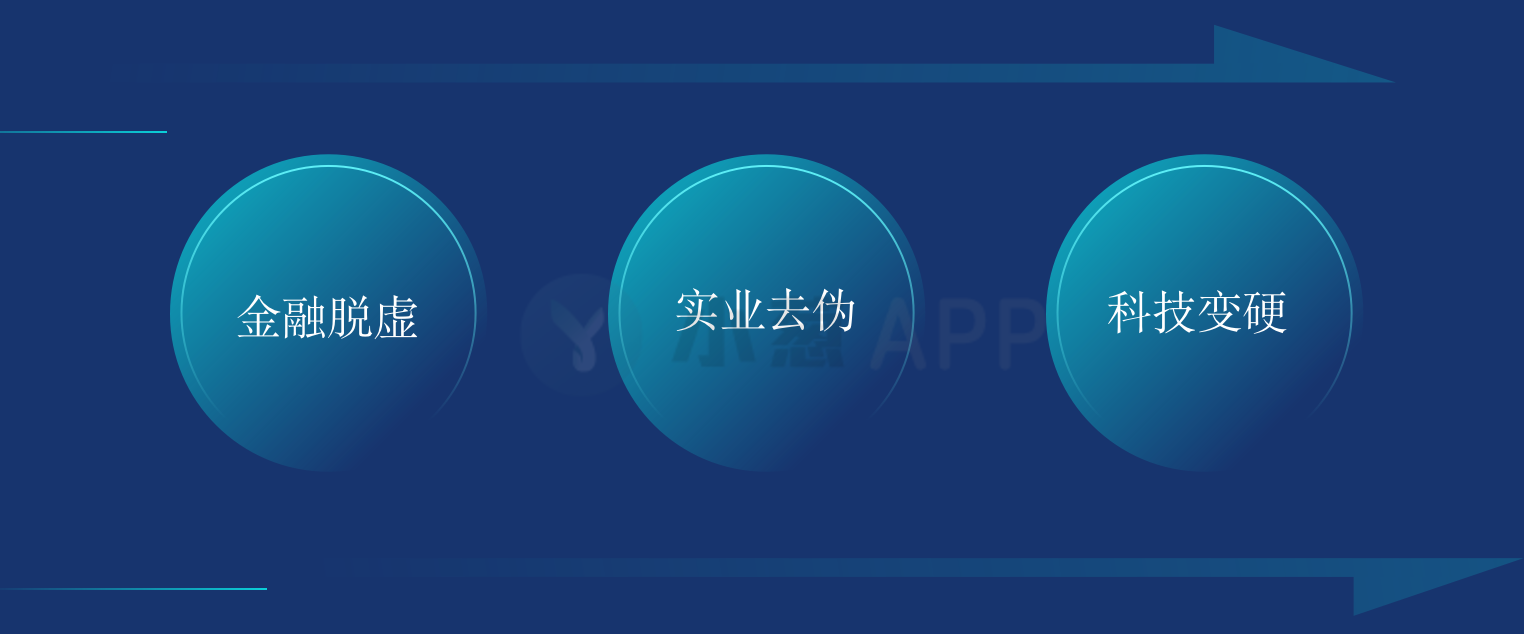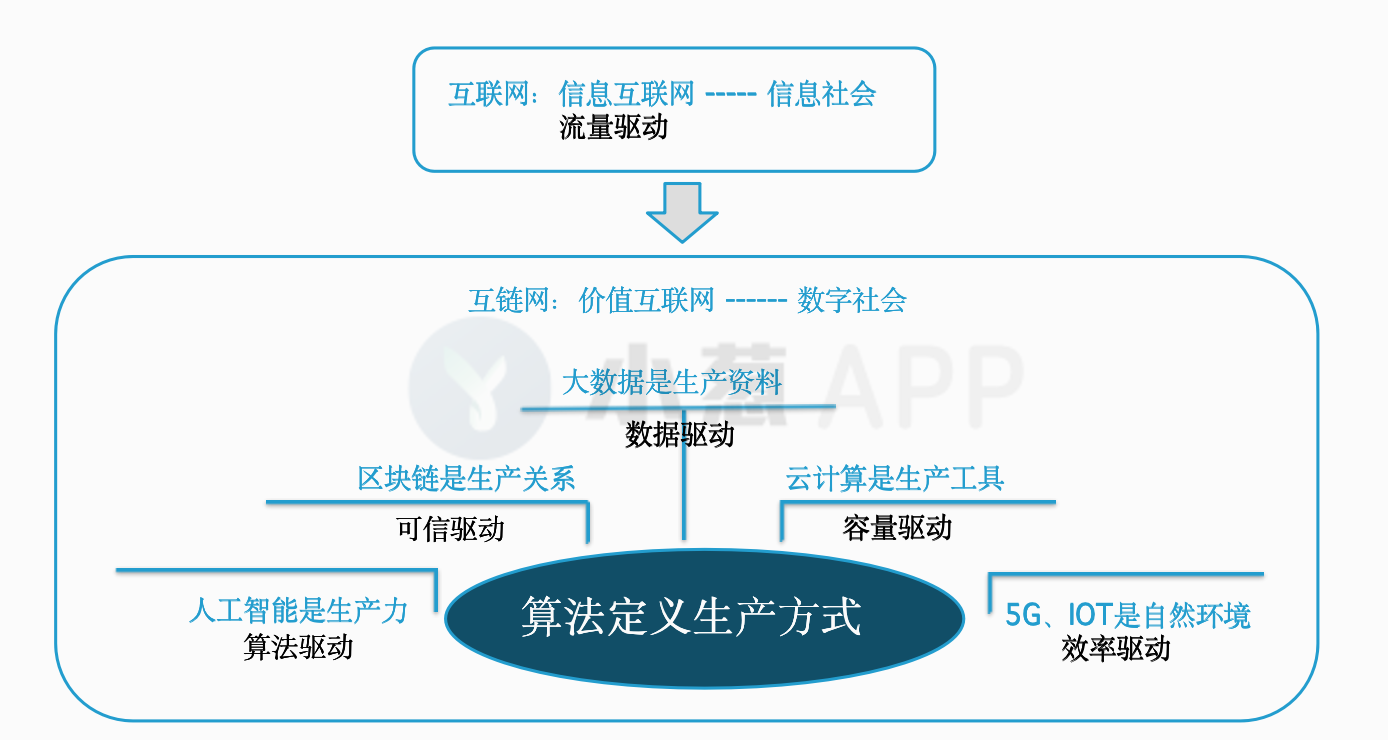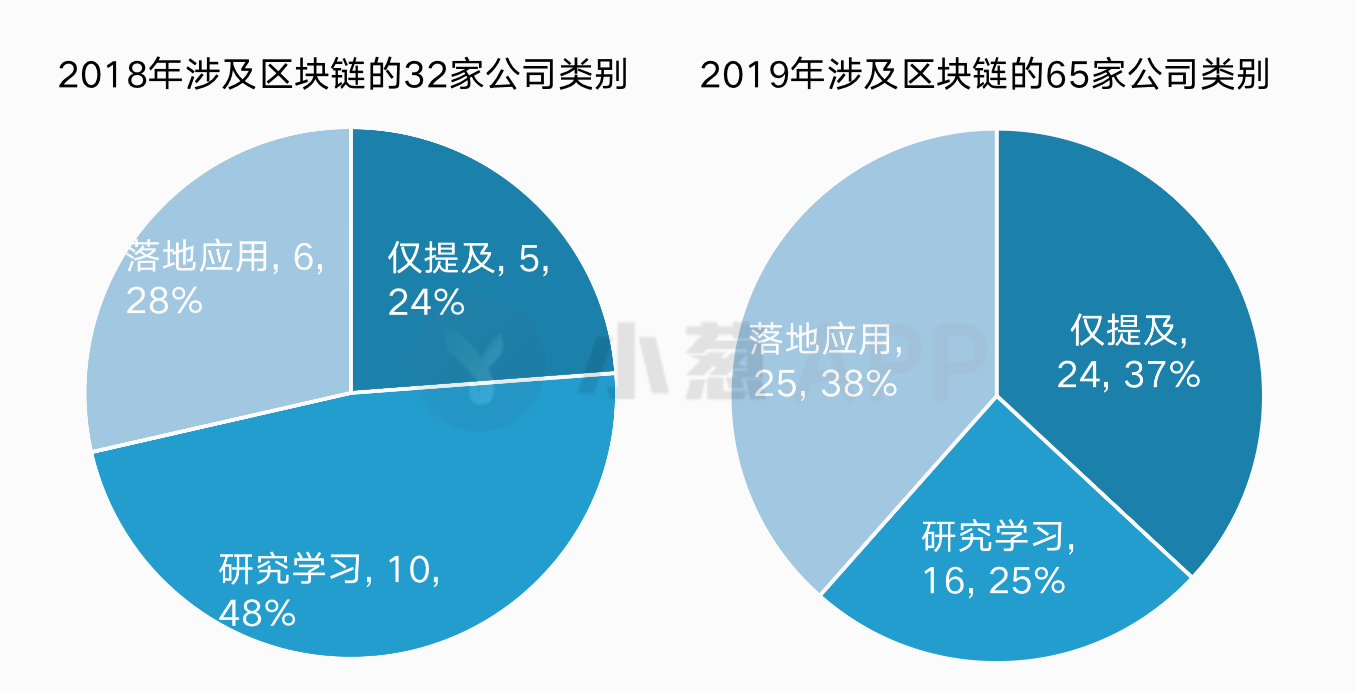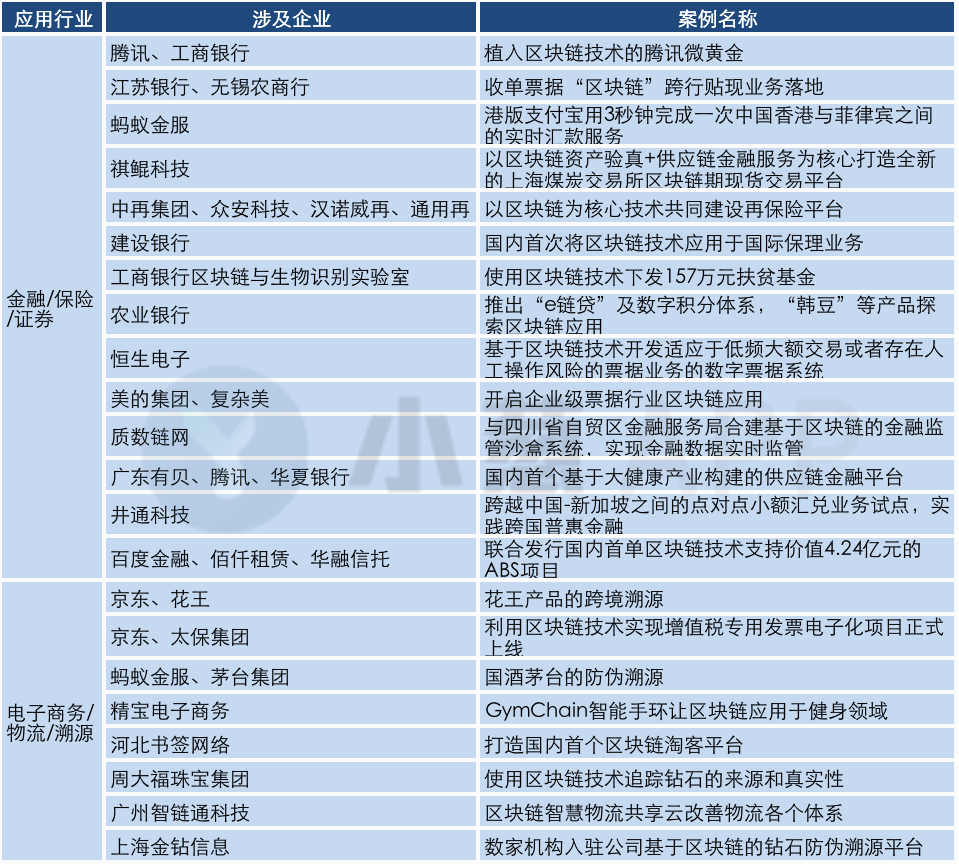Viewpoint | In 2020, blockchain is a thing to do if you lose money
introduction
Since the blockchain was promoted to the national strategic level in October 2019, governments at all levels and all sectors of industry, academia, and research have begun to speak for the blockchain and are actively taking action. At present, the industry has basically reached a consensus: 2020 must be the first year of the outbreak of the blockchain industry.
What follows is that "blockchain entrepreneurship" has become a hot topic in the corporate world . Like the original Internet entrepreneurial wave, the blockchain entrepreneurial wave seems to have become the focus overnight. Large enterprises began to plan for chain reform. Entrepreneurs have begun to enter the blockchain business, and practitioners from all walks of life have set their sights on the new track of blockchain.
But what exactly does blockchain bring to industry? How should companies find opportunities to enter the market? To what extent has the current application progressed? Where is the gap and where is the opportunity?
If we say from the policy level that the signal we can enter is the "opportunity" given to the industry by the blockchain , then how to enter, when, and how to enter the market will become the present in all " The "challenges" in front of the " getting ready " .
- 2019 bitcoin chain data review: nearly 4 trillion US dollars of "giant whale" on the chain during the year are in a dormant period
- Inventory of "dead" blockchain projects in 2019: the peak of funds running in March
- The number of banks applying for blockchain patents has increased 38 times in 4 years. Weizhong Bank wins the championship with 288 patents.
On January 12, "When Industry Meets Blockchain"-The Second Xiamen International Blockchain Venture Summit Forum held a focused discussion on the various confusions of the current combination of blockchain and industry. Dozens of industry-university-research experts A lot of unique and forward-looking opinions have formed in the collision of scholars' opinions.
Scallion has refined the essence of it, presenting as far as possible the practitioners who have deeply cultivated the field of blockchain, thinking and predicting the current direction of the combination of blockchain and industry , hoping to give practitioners who have already entered or will soon enter this track Some inspiration.
Blockchain development: What does blockchain mean to industry?
Talking about the development of the industry, Li Zhen, the founder of Xiamen Hongxin Group, was very moved. He admits that it has been difficult to do business in the past few years. Many listed companies have delisted, and many of the "richest people" have become "first losers" and "storms "Continuously, 17 years are small and medium-sized enterprises, 18 years are listed companies, 19 years are big consortia, there will definitely be new thunderstorms in 2020.
However, Li Zhen is very sure that the spring of industry has begun since 2019, because "technology is the hope of industry" .
Li Zhen believes that in order to engage in industry, we must first have a clear understanding of the economic situation. China's current development trend is " financial devaluation, industrial deception, and technological hardening ". Now it is in an era of national innovation and innovation. There are many actions to support the industry and guide the flow of social capital to high-tech companies. The spring of hard technology such as blockchain and artificial intelligence has come. The hope of physical enterprises is technological innovation.
" The world is currently at the fifth long wave turning point. The global economy is undergoing great changes. This turning point means that we are about to enter the new era of the digital economy from the information age. " Liu Jing, an expert consultant at Huobi China, said in a live speech. .
The chairman of the IEEE committee Li Ming also believes that from a technical perspective, the core element of the digital economy is data, and the new generation of information technology such as blockchain is an excellent tool for processing data. The main task is to maximize the value of data and form The data-based service model promotes the development of the digital economy, so the blockchain is crucial to the development of the real economy in the future.
Liu Jing pointed out that the essence of the digital economy era is that algorithms define production methods, and the entire production relationship and production methods will change.
She shared a schematic diagram of the digital economy era drawn by her and emphasized that although this emerging era will be jointly defined by many emerging technologies (blockchain, big data, artificial intelligence, Internet of Things, 5G, etc.), whether it is Data-driven, capacity-driven or efficiency-driven, algorithm-driven, the most fundamental thing is to have real, complete, credible and coherent data.
"And this is exactly the problem that the blockchain is going to solve, the issue of credibility."
So for enterprises, what problems can blockchains help them solve?
In Liu Jing's view, most of the technology is to solve the problem of how a monk draws water (improving the efficiency of water extraction, changing the method of drawing water, etc.), and the blockchain is to solve the problem of how three monks draw water and drink. It is a problem of multi-party collaboration, so it must be applied to the scenario of multi-party collaboration to highlight its value.
She pointed out that the current six basic use scenarios of blockchain (finance, commerce, people's livelihood, smart cities, inter-city interworking, and government affairs) are actually solving the problem of multi-party collaboration.
So far, what is the application of blockchain technology?
The application of blockchain is accelerating, but the proportion of application landing is far lower than expected.
A set of survey data made by Internet Pulse shows that although domestic blockchain applications are accelerating, the proportion of application landings is still low.
Data show that in 2018, of the 70 blockchain concept listed companies, 32 companies mentioned blockchain in their annual reports. In the first half of 2019, 65 of the 112 blockchain concept listed companies mentioned the blockchain in their semi-annual reports.
The absolute number of companies that mentioned blockchain has increased in 2019, but 21 companies that have mentioned the development of the blockchain field and blockchain technology in the 2018 annual report have reported that in the 2019 semi-annual report No mention is made of the progress of blockchain-related businesses.
In addition, in terms of application landing performance, of the 32 blockchain-related companies in 2018, 9 mentioned landing applications, accounting for 28.12%. Of the 65 blockchain-related companies in the first half of 2019, 25 are developing applications, accounting for 38.46%.
In other words, from 2018 to 2019, more than twice as many listed companies began to contact the blockchain, but the proportion of truly forming applications is still not high.
Huobi China expert consultant Liu Jing also shared a set of data: At present, there are about 3,000 companies doing blockchain in the country, but only 5% of companies that really use blockchain technology to solve practical problems .
"So although the application of blockchain is accelerating, the actual landing ratio is not very good."
In addition, Huobi China has also compiled a relatively mature application case of the blockchain in the country (as shown in the table below), which has only accumulated dozens of online cases.
As for why the blockchain has not been applied on a large scale, Liu Jing believes that the fundamental reason is that it has very many challenges in practical applications, with three concentrated performances, which is also where industry practitioners need to try their best to improve.
The first is how to off-chain data information. How to determine the authenticity of the data at the moment of the chain is still a problem. In the short term, it is solved by introducing a third-party witness endorsement mechanism, such as introducing a credible institution or individual as a node. In the long term, it is necessary to rely on the Internet of Things and AI technology to collect device data.
The second is how to let multiple parties join the blockchain system and actively contribute. It is also difficult to make multiple parties with equal status willing to join the blockchain platform. At present, a solution is to form a coalition of multiple parties. For example, the R3 alliance is jointly launched by more than 40 financial institutions worldwide. However, the launch is easy, and the operation and maintenance of the alliance is difficult. Without an excellent incentive mechanism, the alliance is likely to fall into an increasingly loose and inefficient state. This depends on the research and improvement of the token economy.
The third is how to build a friendly underlying infrastructure. The current underlying infrastructure of the blockchain still has problems such as insufficient TPS, insufficient security, and insufficient inter-chain interoperability. These all depend on the corresponding technological progress and the maturity of the blockchain standards. Development time.
How should blockchain entrepreneurs start to promote the implementation of blockchain in the physical field?
For how to promote the further acceleration of the implementation of the blockchain, the guests gave some suggestions from their respective perspectives.
Huang Lianjin, an expert member of the China Electronics Society's Blockchain Branch, believes that blockchain needs to be used in conjunction with artificial intelligence.
"If the blockchain technology is simply applied, there are not many application scenarios. It may be some games or digital currencies. However, the blockchain must be combined with the real and must be combined with other technologies in order to be used , including artificial intelligence, the Internet of Things, 5G, especially The advent of 5G has greatly promoted the landing of the blockchain. "
Huang Lianjin further pointed out that the four major points of the combination of blockchain and artificial intelligence technology have four aspects: security, trusted computing, digital identity, and federal learning. There are many scenarios where blockchain and AI can be used, such as supply chain finance, such as traceability, using AI + IOT + TEE to provide trusted data and risk control data, using blockchain to provide data certification, and implementation based on smart contracts Process simplification and optimization.
Huobi China expert consultant Liu Jing believes that there are currently three ways to promote the implementation of blockchain applications.
First, focus on creating a benign business model.
When designing the entire project, we must first form a virtuous circle of business models.
She believes that the key to the creation of a blockchain business model lies in four points: one is to have sales, and to attract users through the design of the token incentive system to increase stickiness; the second is the value circulation. Promote the more efficient circulation of value, such as supply chain finance, large deposit certificates, etc. can be applied; the third is to reduce costs, such as clearing and settlement, saving a lot of manpower and material resources; finally, the realization of data, the realization of the right to personal data based on the blockchain And transactions.
Second, construction demonstration projects
When the early blockchain technology was immature, government or capital was needed to promote demonstration projects and ecological construction.
It can not be promoted only by entrepreneurial enterprises and small private enterprises. Just like the construction of urban road networks, it requires the overall planning at the government level to promote and open the obstacles between various roads. Only they took the lead in doing some demonstration projects and achieved certain results, and other social enterprises will imitate and promote projects in various industries.
Third, the entire population understands and learns about blockchain.
Not only must more and more people know about the blockchain, but also cognition. The large-scale popularization of blockchain knowledge is important.
From Liu Jing 's point of view, in terms of business logic, the mature business model , demonstration project, and universal education are gradually diminishing in utility from the front to the back. The first one has the most mature business logic, but for a new one, In terms of technology growth and application promotion, they are counter-productive, and universal education is the most important, followed by demonstration projects before they can mature and form a business model.
Because of this, Huobi China has been a famous teacher's lecture hall since December 2019. In more than one month, it has provided more than 100 popular education courses for the government, state-owned enterprises, state-owned enterprises and listed companies.
Blockchain entrepreneurship: Finding the right direction and entering in time
In addition, there were two summit forums on how to promote the accelerated landing of the blockchain, and the opportunities and challenges of the blockchain + industry.
The panelists thought that blockchain + industry is both an opportunity and a challenge. The "opportunity" is reflected in the fact that blockchain can combine emerging technologies such as AI and big data. The development of innovative companies provides ordinary people with new investment opportunities; "challenges" This is reflected in the fact that blockchain entrepreneurs and investors need to evaluate and locate their own situation, and also need to find the entry point of blockchain technology in the industrial field in order to take advantage of the advantages of blockchain technology.
"In fact, the central government has already pointed out the direction for the development of the blockchain. It is to integrate traditional industries and industries that really solve the needs of people's livelihood. This is the future of the blockchain. " Sha Jingang, the host of this summit, was accepting Said during the interview.
" The combination of industry will make the blockchain really enter the fast lane . Industry will bring more talents, funds and business models to the blockchain , and really let everyone see the advantages of the blockchain."
Sha Jinang is also the founder of Xiamen Lianhe College. In this wave, they are targeting the blockchain education sector. He concluded that there will be a huge talent gap in the blockchain industry in the future. To solve the problem of blockchain talent supply from two pieces:
- The first is to train as many professionals as possible, including personnel training in multiple directions, including technology, business, and operations;
- The second is to promote major universities to open blockchain courses as soon as possible. At present, Xiamen University has been promoted to establish a blockchain research center to allow Xiamen University graduates and undergraduates to develop in the direction of blockchain.
According to Sha Jingang, their development goal is to train 100 blockchain companies each year, transport 1,000 talents into the blockchain industry, and popularize 100,000 online audiences with online courses.
2020 is the first year of the blockchain industry. At the moment, blockchain is also a thing to do if you lose money.
It can be said that 2020 is the first year of the outbreak of the integration of many cutting-edge technologies. The reason why the blockchain is hot at this time is precisely because technologies such as artificial intelligence, 5G, and the Internet of Things have reached a certain accumulation, which can produce intertwined, react.
The blockchain industry is gaining momentum, and regional development is already showing multiple points of flowering
Zhang Haihang, the founder of Six Dimension Quantum, believes that the current domestic industrial blockchain is developing rapidly, and regional development has shown a trend of multi-flowering.
The Bohai Rim region is driven by bottom-up government affairs. The number of startup companies is the largest. The Yangtze River Delta region has strong underlying facilities. The Austrian-Hong Kong-Macao Greater Bay Area has the most comprehensive industrial chain layout and enterprise volume.
Zhang Haihang believes that there are currently three sectors that can meet the new future. The first plate is the commercial landing, and now it is a process from real to virtual; the second plate is the research center and laboratory landing; the third plate is the industrial landing. He believes that the previous surge in patent applications from 2016 to 2019 is in line with the industry's development trend. The patents at the beginning are relatively easy to land, but it will become increasingly difficult later.
In 2020 , blockchain is a business that also has to lose money
Wu Sijin, the founder of 33 complicated US technology, believes that blockchain is a top-level technology, which is higher than the 5G strategy. Even when it encounters collision with AI, it should give priority to investing money in the blockchain, because "the value of the Internet of Value Highland China must be occupied "…" No matter how much money is invested in the construction of the blockchain industry, even if you lose money, you have to get it. "
Wu Sijin pointed out that internationally, China has always been in a huge disadvantaged position in the financial field, including the internationalization of the RMB. If China wants to occupy a higher position in the financial market, it must rely on the blockchain. Therefore, " blockchain is like a high-speed rail , The business that has to do with losing money . "
Speaking of future development prospects, Wu Sijin said that "the need for money should be resolved soon. The basic national policy for the development of the blockchain has been determined. Although startups have no money to promote industrial expansion, the driving force of the country is very strong." He believes that the biggest gap in talent needs is next.
In addition, in view of China's international competition in the field of blockchain, Wu Sijin expressed confidence. "I don't think the United States will have any advantage in the field of blockchain." He said that although foreign countries have first-mover advantages in blockchain technology, However, many of the R & D achievements of the Chinese team have now surpassed foreign countries, and they are relatively advanced in terms of application and landing, and patent applications are far ahead.
"On the chain" is the most important thing now
Wang Binsheng, Distinguished Professor of the Graduate School of the Chinese Academy of Social Sciences, believes that the development of artificial intelligence and the Internet of Things has accelerated the integration of the physical and virtual worlds. The characteristics of modern industrialization are the separation of production, operation, and consumption, and the division of labor in the industry. The era of blockchain artificial intelligence will be a new fusion of these three. The economic nature of the popularity of blockchain is, from a macro perspective, an asset transfer movement, and traditional financial assets will gradually be transferred to the chain .
In this regard, Wu Sijin, a complicated beauty, also holds the same view. He believes that in the near future, mobile phones, catering, food, art, home appliances, cars, etc., all goods will issue tokens to be traded on the chain, and all claims will also be Will trade.
"The so-called Internet of Value means that valuable things can pass on value." All cross-chain transactions are conducted on the blockchain through tokens, not just a few certificates, all points, commodities, and debts are all Circulating on the chain and connecting the entire network are valuable. Just like the Internet, a single local area network is not effective. Only after everyone is on the chain can transactions be conducted very securely and securely.
Wu Sijin also answered the question of "whether or not to use the blockchain and what scenarios are suitable for the blockchain" which the industry has been discussing. He believes that this is not a problem. The answer is very positive. In the future, businesses will not be able to do business without the blockchain. "Chain dealers" will be the norm in the digital economy era, and the blockchain is also the norm. Just as in the internet era, there is no way to do business without the internet.
In Wu Sijin's view, whether the thing on the chain is true or not is not the most important. At this stage, it is most important to recognize that the direction is "on the chain". Regardless of whether it is true or false, as long as it is on the chain, it can be .
"Because as long as the chain is on, all of them will be revealed." Once the chain is on, the fake and real cannot be changed. But real names are important to be able to establish real correspondence.
After a long period of precipitation, good companies can develop better after being chained, and poor companies will be identified after being chained.
We will continue to update Blocking; if you have any questions or suggestions, please contact us!
Was this article helpful?
93 out of 132 found this helpful
Related articles
- CME Group's option products based on Bitcoin futures officially launched
- Blockchain + Medical Research Report: The biggest pain point of data and traceability, blockchain technology may save more than 100 billion US dollars in costs each year
- Blockchain 2B company is hot: the company takes orders madly, employees 996, year-end awards have increased significantly
- BTC block reward is about to be halved, will its security rate be halved?
- Industry Blockchain Weekly 丨 Blockchain writes 7 provincial government work reports, Baidu and Tencent enter A shares
- Babbitt weekly election 丨 Do you panic when 2020 starts like this?
- Decentralization cannot be done in one step, A16z talks about three factors for the success of cryptocurrency projects












